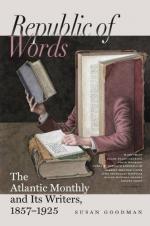It might be curious, in reference to this subject of horticulture, to institute an inquiry as to cause and effect. Have the increased means of gratifying taste expanded it, or has taste rapidly developed created the means of supply? Doubtless there has been reaction from both directions, each operating on the other. One striking exhibition of pure taste among us is the formation of picturesque arboretums, especially of terebinthinate trees, and others allied to the Coniferae. This taste, so diligently cultivated in England, has found zealous worshippers among us, and some admirable collections have been formed. The cemetery of Laurel Hill, at Philadelphia, under the critical eye and taste of the proprietor, Mr. John Jay Smith, that of Mount Auburn, in Cambridge, of Greenwood, New York, and the cemetery in Cincinnati, have afforded fine specimens of rare trees, though, from the nature of their purposes, picturesque effect could not be reached, except so far as aided by irregularity of surface. And here we would remark, in connection with this subject, that one regulation of the Cincinnati cemetery is worthy of imitation. No arbitrary railings or ill-kept hedges bound the individual lots; all is open, and the visitor, as he drives through the grounds, is charmed by the effect,—a park studded with monuments: the social distinctions, which, perhaps, necessarily separated in life, have disappeared in death.
In connection with landscape-gardening, one American name stands conspicuous,—the name of one who, if not, in point of time, the first teacher of the art in this country, has at least done more than any other to direct attention to it,—to exhibit defects, suggest improvements, create beauties, and invest his subject with such a charm and interest as to captivate many minds which might otherwise have been long insensible to the dormant beauty within their reach, or that which they themselves had the power to produce: we refer, of course, to the late Andrew J. Downing. With naturally fine artistic perceptions, his original occupation of a nurseryman gave direction to his subsequent pursuits. Under different circumstances, his taste might, perhaps, have been turned to painting, sculpture, or architecture: indeed, to the last he paid no inconsiderable attention; and as the result, many a rural homestead, which might otherwise have been a bleak house, is conspicuous as the abode of taste and elegance.
Among the prominent private arboretums in our country may be mentioned that of Mr. Sargent at Wodeneshe. Mr. Sargent, as may be seen by his supplement to Downing’s “Landscape-Gardening,” is an enthusiast in the culture of conifers; he is reputed to have made liberal importations, and the results of his attempts at acclimation, given to the public, have aided others in like endeavors. Judge Field, of Princeton, New Jersey, has a pinetum of much value; some of his specimens are of rare excellence. He, also, has been a diligent importer.




